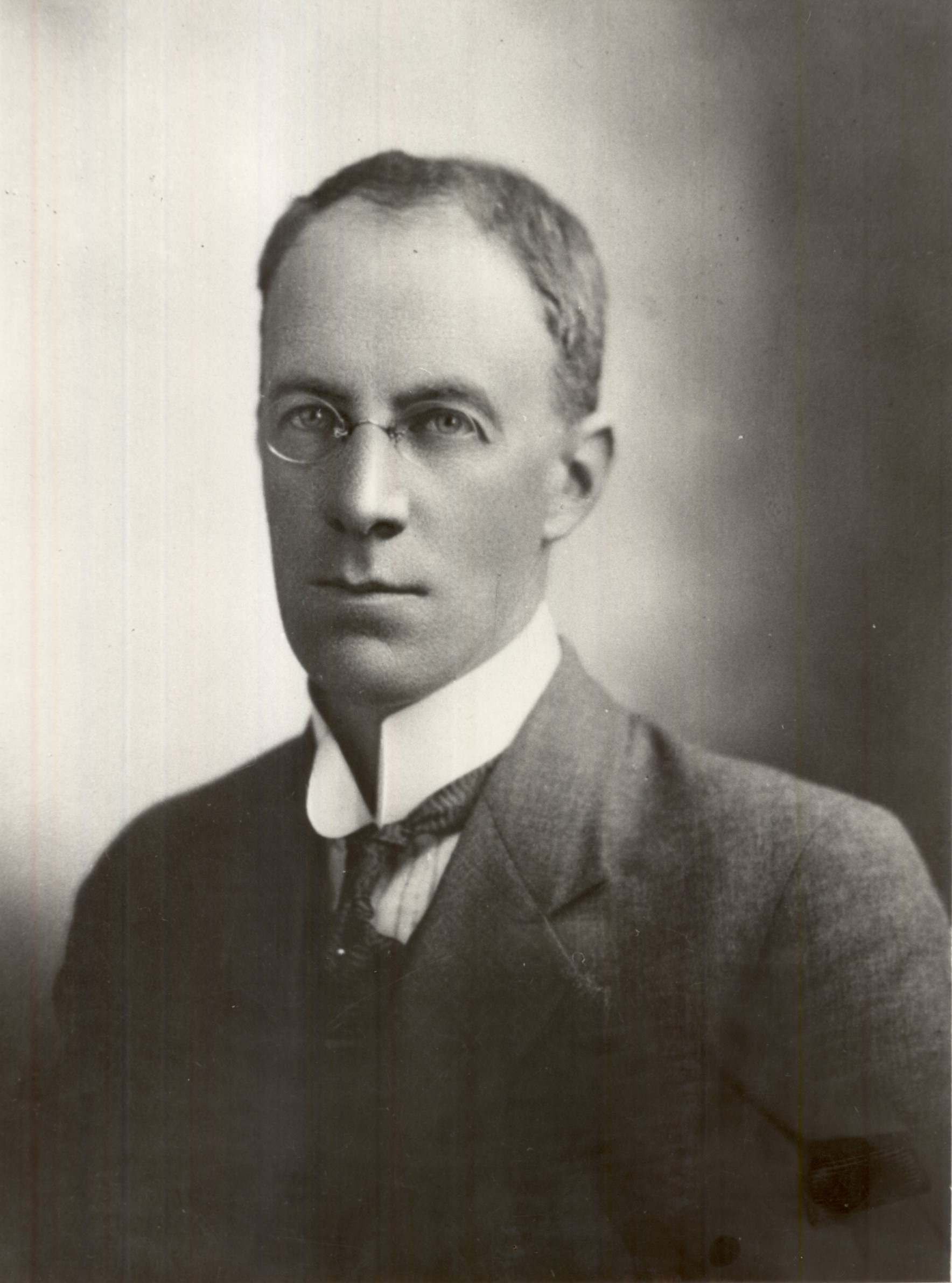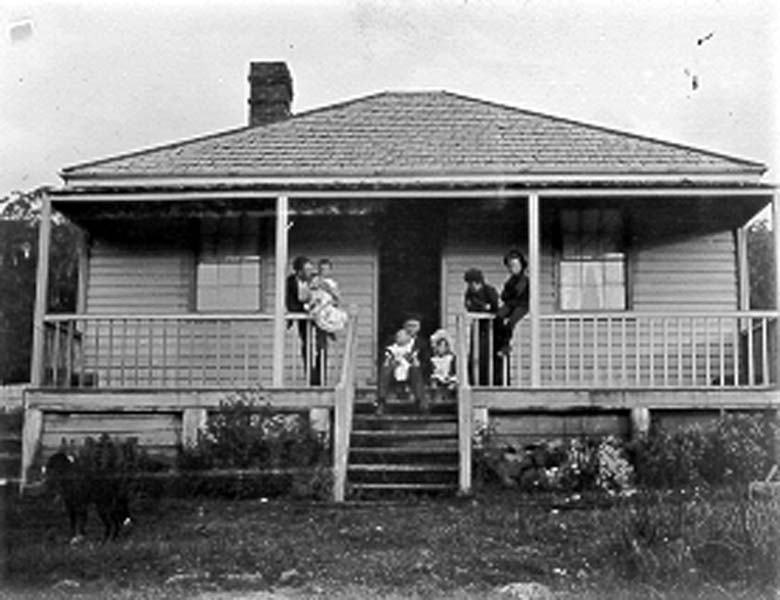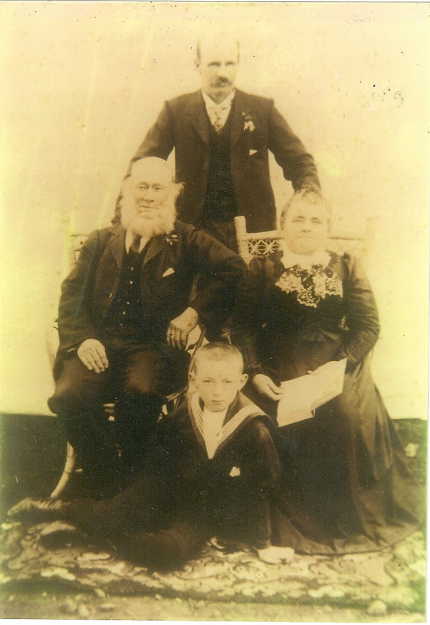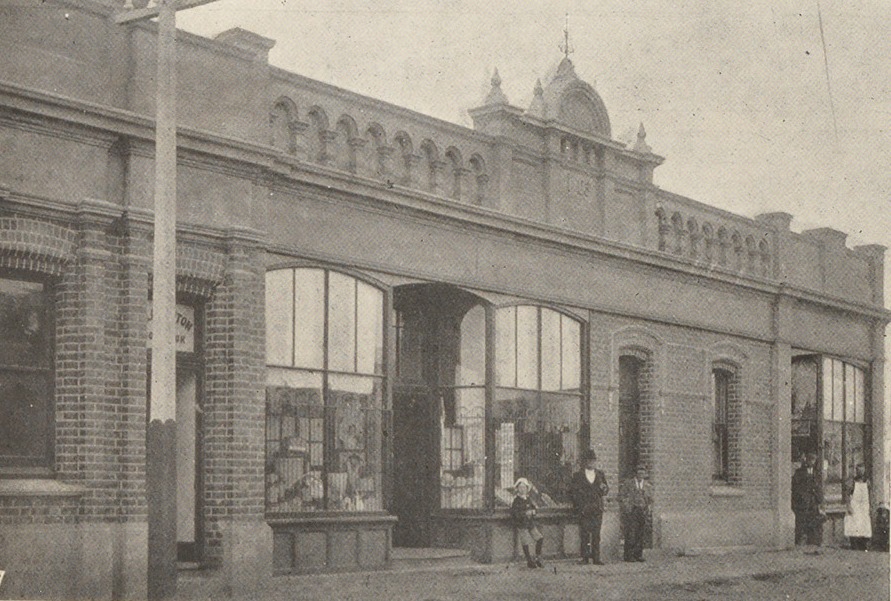Stephen Spurling III (1876–1962) rode the rails and marched the mountains in his quest to snap Tasmania. Revelling in ‘bad’ weather and ‘mysterious’ light, this master photographer shot the island’s heights in Romantic splendour. His long exposures of the lower Gordon River are likely to have helped shape the reservation of its banks in 1908.[1] Snow-shoed, ear-flapped and roped to a tree, he captured Devils Gullet in winter and froze the waters of Parsons Falls. But Spurling wanted to record the full gamut of life. He was there when the whales beached, the bullock teams heaved, the apple packers boxed antipodean gold and floodwaters smashed the Duck Reach Power Station. His lens was ever ready.

Oddly, just about the only thing Spurling didn’t snap was a sack full of thylacine heads which he claimed to have seen at the Stanley Police Station in 1902. Forty-one years after the event, Spurling wrote that he watched ‘cattlemen from a station almost on the W coast [produce] two sacks of tigers’ heads (about 20 in number) and [receive] their reward’.[2] One-hundred-and-nineteen years after the event, this claim is hard to reconcile with the records of the government thylacine bounty. It adds a puzzle to the story of the so-called Woolnorth tigermen.
The Woolnorth tigermen
About 170 thylacines were killed at the Van Diemen’s Land (VDL Co) property of Woolnorth in the years 1871–1912, mostly by the company’s tigermen—a lurid title given to the Mount Cameron West stockmen. The tigermen had a standard job description for stockmen, receiving a low wage for looking after the stock, repairing fences, burning off the runs and helping to muster the sheep and cattle. They supplemented their income by hunting kangaroos, wallabies, pademelons, ringtail and brush possums. The only departure from the normal shepherd’s duty statement was keeping a line of snares across a neck of land at Green Point—now farming land at Marrawah—where the supposedly sheep-killing thylacines were thought to enter Woolnorth. The VDL Co paid their employees a bounty of 10 shillings for a dead thylacine, which was changed to match the government thylacine bounty of £1 for an adult and 10 shillings for a juvenile introduced in 1888. To make a government bounty application the tiger killer needed to present the skin at a police station, although sometimes thylacine heads sufficed for the whole skin.
It is not easy to work out how or even whether the Woolnorth tigermen generally collected the government thylacine bounty in addition to the VDL Co bounty. It is reasonable to think that the VDL Co would have encouraged its workers to do this, since doubling the payment doubled the incentive to kill the animal on Woolnorth. However, only two men are recorded as receiving a government thylacine bounty while acting as tigerman, Arthur Nicholls (6 adults, in 1889) and Ernest Warde (1 adult, 1 juvenile, in 1904).[3] This suggests that if Woolnorth tigermen and other staff received government thylacine bounties they did so through an intermediary who fronted up at the police station on their behalf.

Charles Tasman Ford and William Bennett Collins
The most likely candidates for the job of Woolnorth proxy during the government bounty period 1888–1909 were CT (Charles Tasman) Ford and WB (William Bennett) Collins. In the years 1891–99 Ford, a mixed farmer (sheep cattle, pigs, poultry, potatoes, corn, barley, oats) based at Norwood, Forest, near Stanley, claimed 25 bounties (23 adults and 2 juveniles), placing him in the government tiger killer top ten.[4] If you include bounty payments that appear to have been wrongly recorded as CJ Ford (5 adults, 1896) and CF Ford (1 adult, 1897), his tally climbs to an even more impressive 29 adults and 2 juveniles—lodging him ahead of well-known tiger tacklers Joseph Clifford of The Marshes, Ansons River (27 adults and 2 juveniles) and Robert Stevenson of Blessington (26 adults).[5] After Ford’s death in September 1899, Stanley storekeeper Collins claimed bounties for 40 adults and 4 juveniles 1900–06, his successful bounty applications neatly dovetailing with those of Ford.[6]


Where did their combined 75 tigers come from? The biggest source of dead thylacines in the far north-west at this time was Woolnorth. Twenty-six adult tigers were taken at Woolnorth in the years 1891–99, and 44 adults in the years 1900–06, making 70 in all. Tables 1 and 2 show rough correlations between Woolnorth killings and government bounty claims made by Ford and Collins. Ford, for example, received 7 payments 1892–93, the same figure for Woolnorth, while in the years 1894–97 his figure was 13 adults and theirs 16. Similarly (see Table 2), Collins claimed 16 adult and 4 juvenile bounties in 1900, a year in which 22 adult tigers were killed at Woolnorth; while in 1901 the comparative figures were 17 and 9. (Some of the data for Woolnorth is skewed by being recorded only in annual statements, which makes it look as though most tigers were killed in December. This was not the case: the December figures represent killings over the course of the whole year.) Clearly the Woolnorth tigers did not represent all the bounties claimed by Ford and Collins, but likely these made up the majority of their claims.
Table 1: CT Ford bounty claims compared to Woolnorth tiger kills 1891–99
| CT Ford | 29 – 2 | Woolnorth | 26 – 0 |
| 31 July 1891 | 2 adults | ||
| 21 July 1892 | 1 adult | ||
| 9 Jany 1893 | 1 adult | 31 Dec 1892 | 2 adults |
| 27 April 1893 | 2 adults | ||
| 5 May 1893 | 1 adult | ||
| 19 June 1893 | 1 adult | ||
| 24 July 1893 | 1 adult | 18 Dec 1893 | 5 adults |
| 23 Jany 1894 | 2 adults | 20 Dec 1894 | 3 adults |
| 24 Feby 1896 | 5 adults | 30 Dec 1895 | 4 adults |
| 5 March 1897 | 1 adult | 7 Jany 1896 | 2 adults |
| 22 Sept 1897 | 3 adults | 19 Dec 1896 | 3 adults |
| 4 Nov 1897 | 2 adults | Dec 1897 | 4 adults |
| 1 Feby 1898 | 1 adult | ||
| 2 August 1898 | 2 adults | Dec 1898 | 3 adults |
| 30 May 1899 | 1 adult | ||
| 30 Aug 1899 | 3 adults | ||
| 30 Aug 1899 | 2 young |
Table 2: WB Collins bounty claims compared to Woolnorth tiger kills 1900–12
| WB Collins | 40 – 4 | Woolnorth | 44 |
| 27 Feby 1900 | 3 adults | ||
| 16 Aug 1900 | 5 adults | ||
| 3 Oct 1900 | 4 adults | ||
| 15 Nov 1900 | 4 adults, 4 young | Dec 1900 | 22 adults |
| 13 Mar 1901 | 2 adults | ||
| 31 July 1901 | 7 adults | ||
| 28 Aug 1901 | 6 adults | ||
| 3 Oct 1901 | 1 adult | Dec 1901 | 9 adults |
| 5 Nov 1901 | 1 adult | Dec 1902 | 3 adults |
| 7 May 1903 | 2 adults | Nov 1903 | 8 adults |
| 17 Nov 1903 | 4 adults | 1904 | 1 adult, 1 young (Warde) |
| 21 June 1906 | 1 adult | 1906 | 1 adult |
It would not have been difficult for Ford to act as a go-between for Woolnorth workers.[7] He had grazing land at Montagu and Marrawah/South Downs, east and south of Woolnorth respectively, and would have travelled via Woolnorth to reach the latter. He was also a supplier of cattle and other produce to Zeehan, a wheeler and dealer who bought up Circular Head produce to add to his consignments of livestock to the West Coast.[8] It would have been a simple thing for him on his way home from a Zeehan cattle drive to collect native animal skins and tiger skins/heads from the homestead at Woolnorth, presumably taking a commission for himself in his role as intermediary.
Of course that is not the only possible explanation for Ford’s bounty payments. His brothers Henry Flinders (Harry) Ford (three adults) and William Wilbraham Ford (6 adults) both claimed thylacine bounties. They had a cattle run at Sandy Cape, while William had another station at Whales Head (Temma) on the West Coast stock route.[9] It is possible that all the Ford government thylacine bounty payments represented tigers killed on their own grazing runs and/or in the course of West Coast cattle drives. CT Ford did, after all, take up land at Green Point, the place where the VDL Co killed most of its tigers in the nineteenth century. However, if the Fords killed a lot of tigers on their own properties or during cattle drives you would expect to see some evidence for it, such as in newspaper reports or letters. The Fords were, after all, not only VDL Co manager James Norton Smith’s in-laws, but variously his tenants, neighbours and fellow cattlemen. No evidence has been found in VDL Co correspondence. Oddly, when CT Ford shot himself at home in 1899, it was reported to police by his supposed employee George Wainwright—the same name as the Woolnorth tigerman of that time.[10] Perhaps this was the tigerman’s son George Wainwright junior, who would then have been about sixteen years old, and if so it shows that tigerman and presumed proxy bounty collector knew each other.
For all his 44 bounty claims, storekeeper WB Collins possibly never saw a living thylacine, let alone killed one. After Ford’s death, Collins appears to have established an on-going relationship with Woolnorth, being paid for three bounties in February 1900 before his store even opened for business. The VDL Co correspondence contains plenty of evidence that Collins dealt regularly with Woolnorth as a supplier and skins dealer.
The puzzle of Spurling’s sack of tiger heads
The only problem is Spurling. His claim about the 20 tiger heads being presented to the Stanley Police as a bounty claim doesn’t make a lot of sense. There is no record of such an event in the Stanley Police Station books, although, admittedly, tiger bounty payments rarely turn up in police station duty books or daily records of crime occurrences.[11] Still, 20 bounty claims presented at once would constitute a noteworthy event. The ‘almost W coast’ cattle station to which Spurling referred can only have been Woolnorth or a farm south of there, but his recollection seems wildly inaccurate..
If we assume Spurling got the year right, 1902, we can try to fix on an approximate date for his sack of tiger heads. Spurling photos of Stanley appeared in the Weekly Courier newspaper on 26 April 1902. If we assume that taking these photos provided the occasion for the photographer to meet the tiger heads, we are confined to government bounty payments for the first four months of that year. Less than 20 bounties were paid across Tasmania during that time, and there were no bulk payments of the kind described by Spurling—nor did any bulk payments occur at any time during the year 1902.
Did Spurling get the year wrong? If the 20 heads came from Woolnorth and were supplied in bulk, the time was probably late 1900, the first year in decades in which more than 20 tigers were taken there. Did Spurling see someone from Collins’ store bring in heads from Woolnorth? Not even that seems likely. In February 1900 Collins collected bounties for three adult thylacines; another 5 adults followed in July; in September he collected on another 4; and in October he presented 4 adults and 4 cubs: 20 animals in all, spread over a period of eight months, not in one hit.[12] Saving those 20 heads secured over a period of months for presentation in one hit would be a—frankly—disgusting task given their inevitable state of putrefaction. Spurling’s sack of heads didn’t represent Collins or Woolnorth. No one—no bounty applicant from any part of Tasmania, let alone a group of Woolnorth employees—was ever paid 20 bounties in one hit. The basis of his claim remains a mystery.
[1] See Nic Haygarth, Wonderstruck: treasuring Tasmania’s caves and karst, Forty South Publishing, Hobart, 2015, pp.63–69.
[2] Stephen Spurling III, ‘The Tasmanian tiger or marsupial wolf Thylacinus cynocephalus’, Journal of the Bengal Natural History Society, vol.XVIII, no,2, October 1943, p.56.
[3] Nicholls: bounties no.289, 14 January 1889, p.127 (4 adults); and no.126, 29 April 1889, p.133 (2 adults), LSD247/1/1. Warde: bounty no.190, 20 October 1904 (1 adult and 1 juvenile), LSD247/1/2 (TAHO).
[4] Bounties no.365, 31 July 1891 (2 adults); no.204, 21 July 1892, LSD247/1/1; no.402, 9 January 1893; no.71, 27 April 1893 (2 adults); no.91, 5 May 1893; no.125, 19 June 1893; no.183, 24 July 1893, no.4, 23 January 1894 (2 adults); no.239, 22 September 1897 (3 adults, ‘August 2’); no.276, 4 November 1897 (2 adults, ’27 October’); no.379, 1 February 1898 (‘4 December’); no.191, 2 August 1898 (2 adults, ‘7 July’); no.158, 30 May 1899 (’26 May’); no.253, 30 August 1899 (3 adults, ’24 August’); no.254, 30 August 1899 (2 juveniles, ‘24 August’), LSD247/1/2 (TAHO).
[5] Bounties no.304, 24 February 1896 (5 adults); and no.37, 5 March 1897, LSD247/1/2 (TAHO).
[6] Bounties no.43, 27 February 1900 (3 adults, ’22 February’); no.250, 16 August 1900 (5 adults, ’26 July’); no.316, 3 October 1900 (4 adults, ’27 September’); no.398, 15 November 1900 (4 adults and 4 juveniles, ’28 October’); no.79, 13 March 1901 (2 adults, ’28 February’); no.340, 31 July 1901 (7 adults, ’25 July’); no.393, 28 August 1901 (6 adults, ‘2/3 August’); no.448, 3 October 1901 (’26 September’); no.509, 5 November 1901 (’24 October 1901’); no.218, 7 May 1903 (2 adults, ’24 April’); no.724, 17 November 1903 (4 adults); no.581, 21 June 1906, LSD247/1/2 (TAHO).
[7] Woolnorth farm journals, VDL277/1/1–33 (TAHO). The Woolnorth figure for 1900–06 excludes one adult and one juvenile killed by Ernest Warde and for which he claimed the government bounty payment himself (bounty no.190, 20 October 1904, LSD247/1/2 [TAHO]).
[8] ‘Circular Head harvest prospects’, Wellington Times and Agricultural and Mining Gazette, 19 January 1895, p.2.
[9] Wise’s Tasmanian Post Office directory, 1898, p.184; 1899, p.305.
[10] 10 September 1899, Daily record of crime occurrences, Stanley Police Station, POL93/1/1 (TAHO).
[11] Stanley Police Station duty book, POL92/1/1; Daily record of crime occurrences, POL93/1/1 (TAHO). Daily records of crime occurrences often include information not of a criminal nature.
[12] Bounties no.43, 22 February 1900 (three adults); no.250, 16 August 1900 (five adults); no.316, 27 September 1900 (four adults); and no.398, 28 October 1900 (four adults and four juveniles), LSD247/1/2 (TAHO).